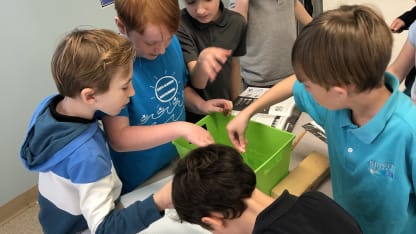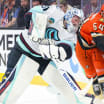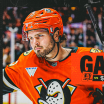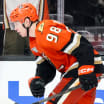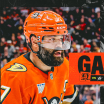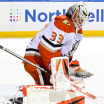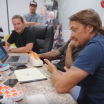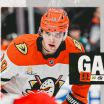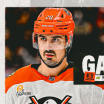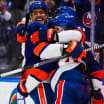"The kids have enjoyed all the lessons, especially experimenting with the materials," Downey said. "They are very excited to design their own pucks."
After completing the workbook curriculum, all participating schools and students were given the opportunity to design their own hockey pucks through the First Flight "Build a Better Puck" Challenge by using an online 3D design tool from Autodesk called Tinkercad.
Cambridge Elementary students logged onto their classroom laptops and experimented on Tinkercad with the size, thickness and texture of a hockey puck. Fourth grade student Andres Bennett came up with several designs using various surface areas and textures.
"I like how the lessons showed us facts about science, so it's fun," Andres said. "I've never been to Honda Center to see the Ducks before, and the field trip is on my birthday, so I'm looking forward to going."
The students from participating schools submitted their "Build a Better Puck" designs through Tinkercad, and four of the puck designs were chosen and printed by a 3D printer. On the day of the First Flight field trip, as 16,000 screaming students filled Honda Center, the Ducks players took to the ice to bring the workbook and science concepts behind the "Build a Better Puck" curriculum to life - and they did so using student-designed pucks.
Jesse Mora from Cambridge Elementary, Caden Dang from John F. Kennedy Elementary, Eddie S from Kinetic Academy and Louis Hurtado from Yermo School joined their teachers on the players' bench as they watched the Ducks compete in stick handling, passing and shooting drills with their winning puck designs.
"It was so cool," said Jesse from Cambridge Elementary. "I really liked being up there on the camera. The players gave me cheers and they gave us our pucks to take pictures with and to take home. I felt really awesome. I felt like I was one of the Duck players."
In recognition of their design and creativity, the four students were awarded a Monoprice 3D printer for their classrooms, provided by SoCal Honda Dealers. For many of the students who attended, it was their first trip to Honda Center, and to see professional athletes use hockey to illustrate science concepts was an experience they won't soon forget.
"It was great seeing all my students so excited to interact with a sport and team I love so much," Webber said. "The application of their learning to a real-life situation really helped drive home the importance behind understanding science and math. Having a student's puck chosen to be one of the four finalists was truly incredible. This experience has really lit a fire in my Cambridge students to keep pursuing engineering activities."
Although the field trip has concluded, the learning is just beginning, as several of the schools plan to take the STEAM concepts introduced by First Flight and continue exploring them in their classrooms throughout the school year.
"This field trip had such a positive effect on the Kinetic students," Downey said. "They worked very hard to prepare, completing the activity pack and creating their puck designs. We are going to continue to build on the ideas presented at First Flight. All of our student groups will have their puck designs 3D printed and judged by some community members. We are so grateful to the Ducks for this opportunity. I know it will be something my students remember forever."

